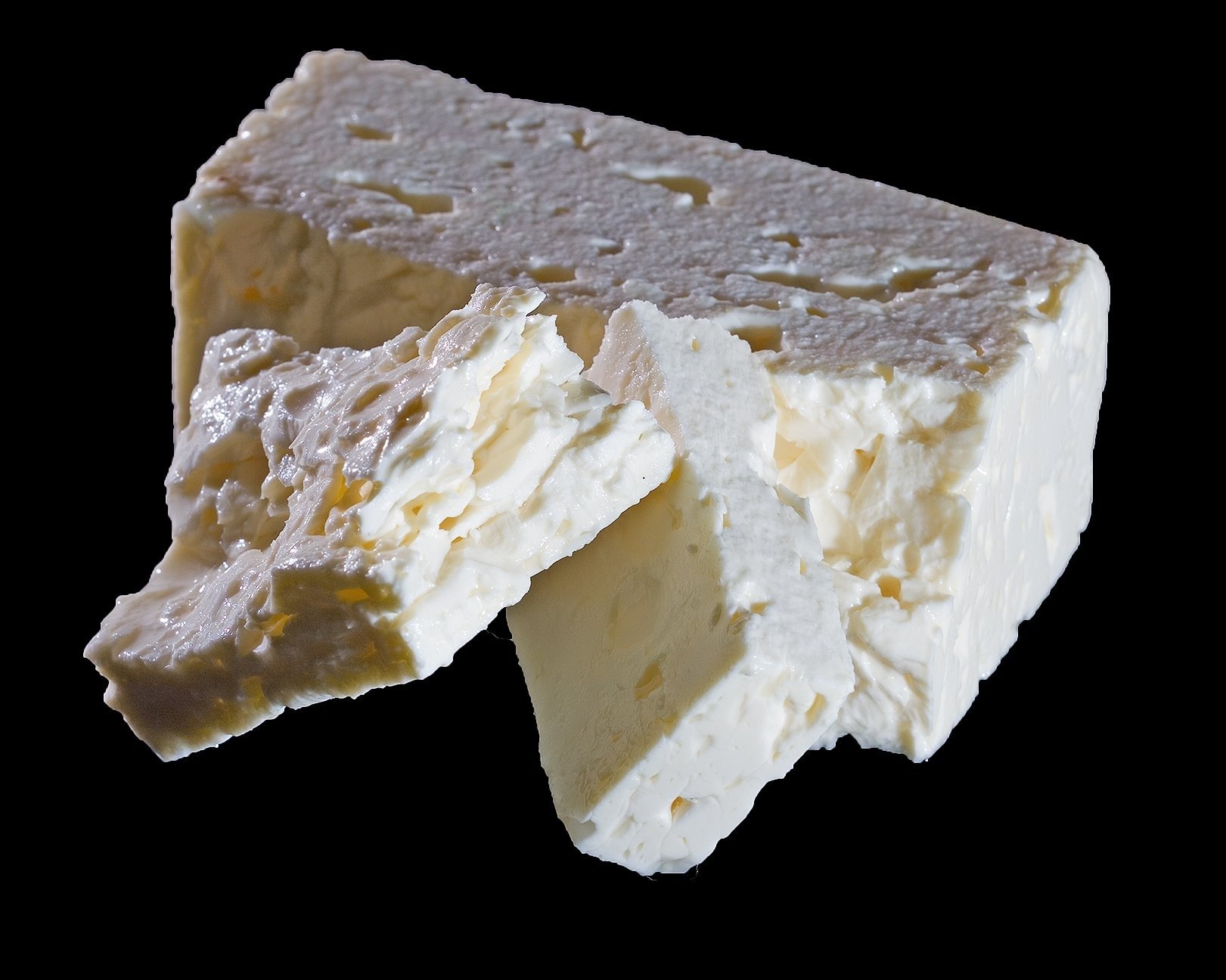Feta is a cheese made in Greece. It is a brined curd white cheese that is made from sheep’s milk or from a mixture of sheep and goat’s milk. It is undoubtedly one of the most famous Greek cheeses which occupies 70% stake in Greek cheese consumption. It is also protected by the EU legislations and only cheeses manufactured in Central Mainland Greece, Macedonia, Thrace, Thessaly, Peloponnese, and Lesvos are allowed to be called Feta.
History
The earliest records of cheese making in Greece can be traced back in the 8th B.C. century in Homer’s Odyssey where the Cyclops Polyphemus was the first to prepare the ancestor of Feta. Based on the myth, he transported the milk placed skin bags made of animal stomachs using his sheep, then one day, he saw that the milk had curdled and became solid. He tasted it and it was actually good. And based on various bibliographic and scientific references, Feta’s production has been known at least since then.
During the Archaic time period, records show ancient Greeks producing a type of Feta using sheep’s milk through Polyphemus’ technique but during that time, it was simply called cheese.
It was during the Byzantine times when Feta cheese was first mentioned. It was called “prosphatos” which means recent or fresh and it was associated with Crete. In 1494, an Italian traveler named Pietro Casola visited Heraklion in Crete and he distinctively describes the production and storage of Feta in brine.
The Greeks started using the name Feta in the 17th century and it literally mean “slice”, which refers to the practice of slicing up cheese to be stored in containers or to be served. Since the early 20th century, Feta cheese has been established as a major part of the Greek diet and it is associated with the traditional way of life.
Characteristics
Feta is a white, pickled curd cheese that has a salty and tangy taste which is enhanced by the brine solution. It is about 25% fat where two-thirds of it is saturated fat. A cube of Feta cheese that is 1.25 oz. has about 100 calories. It is also not a vegetarian cheese.
Traditional Feta cheese is made by mixing thirty percent goat’s milk with sheep’s milk. It is crumbly most of the time, but its firmness, texture, and flavor can also depend on which region it is created. For example, Feta cheese from Macedonia and Thrace is mild, softer, and creamier. They are also less salty and only has few holes. Feta cheese made in Central Greece and Thessaly has a stronger flavor, while those made in Peloponnese is dryer in texture.
Its texture depends on its age where it can be really creamy or crumbly dry. Based on Greek law, it is cured at least three months in brine.
Pairings
Feta goes well with beer, Pinot Noir, Sauvignon Blanc, and Zinfandel because of its salty taste. But if you want to lessen its saltiness, you can wash it under water. It can also be used as a table cheese or melted on a traditional Greek salad, pizza, or pie. Feta cheese also taste great with olive oil, roasted red peppers and nuts.
Today, Feta cheese is widely exported and can be enjoyed in other parts of the world. It is also an essential part of every Greek salad that is available in any restaurant or tavern in Greece. Feta gained popularity around the world due to Greek immigrants bringing their traditions and dietary habits with them. However, it remains wholly Greek because it is a product of Protected Designation of Origin (PDO).


